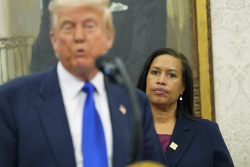
On April 20, 2024, New York State enacted its Good Cause Eviction law. The law applied immediately to New York City; other municipalities could opt in. Since then, more than a dozen cities have adopted it, including Albany, Rochester, and Binghamton.
Given that 45 percent of New York households rent, including 70 percent in New York City, the law could reshape housing markets across the state—for the worse. If left unchanged, Good Cause is likely to shrink rental supply, shift ownership toward large institutional investors, and worsen housing quality. That could tip the state’s housing stock into a downward spiral much like the one New York City experienced in the late twentieth century.
Good Cause pairs onerous limits on when landlords can end a tenancy with annual rent-increase caps amounting to the lesser of either 10 percent or inflation plus 5 percent (8.82 percent for 2024). Landlords can evict only for specific reasons: nonpayment, substantial lease violations, nuisance or illegal use, major property damage, or the landlord’s intent to occupy, demolish, or take the unit off the market. Tenants in covered units are entitled to renew their leases unless one of these grounds applies.
The structure of Good Cause echoes the Rent Stabilization Law of 1969 and the Emergency Tenant Protection Act of 1974, which similarly combined just-cause eviction rules with rent ceilings. These policies slowed new rental construction, encouraged conversions, and degraded housing quality.
The long-term effects of rent control are clear in the academic literature. Under rent control, developers shift from rental to owner-occupied construction; landlords convert units to condos or co-ops; and supply in the regulated market contracts. Scarcity pushes up rents in unregulated units. Capped returns reduce maintenance because they make it harder for landlords to recoup costs. At the same time, mobility declines while tenants remain in units that no longer match their needs. Benefits often accrue to high-income, long-term tenants rather than to the low-income households the policy aims to protect.
Good Cause exempts public housing, rent-regulated apartments, new construction (for a limited time), and owner-occupied buildings with fewer than ten units. However, some cities have sharply narrowed these carve-outs. Rochester, for example, restricts the exemption to landlords who own a single rental unit, placing over 98 percent of its rental stock under Good Cause.
Owners have limited ways to offset capped rents. Evictions can take months and require legal action in nearly all cases. Faced with rising costs and procedural hurdles, many owners are likely to convert units to condos or sell to large institutional investors. Rochester’s landlords are already selling to out-of-town buyers, shifting ownership away from local operators, who have a stake in neighborhood stability. Albany, with similarly narrow exemptions, faces comparable risks.
In Binghamton, the city council overrode Mayor Jared Kraham’s veto and adopted Good Cause. More than half the city’s housing was built before 1939, and less than 5 percent since 2000. Capped rents in such a market limit funds for upkeep. In areas where many properties need significant repairs and code enforcement is stretched thin, the law may push marginal buildings past viability.
Landlords facing higher legal costs and restricted rent growth may walk away from their properties or sell to less committed owners, shrinking habitable stock and increasing blight. This is what happened with New York City’s pre-1974 rent-stabilized units.
Today, those units have the highest rate of maintenance deficiencies—leaks, broken plumbing, structural damage—averaging 75 percent more issues than newer stabilized units and 79 percent more than market-rate apartments. Since 2022, 176 rent-stabilized units have gone into foreclosure—annual foreclosures have roughly doubled each year—with over 2,000 more in mortgage-default warnings.
New York City’s rental market already operates under a highly complex regulatory system, with more than 1 million apartments covered by rent stabilization. Extending Good Cause to currently unregulated units brings more owners into a costly, restrictive system. High property taxes, steep utility bills, and some of the most expensive construction costs in the world already leave many landlords with thin margins. When expenses outpace capped rent increases, their options narrow to deferring repairs, selling, or converting units.
According to Ann Korchak of the Small Property Owners of New York, limiting rent increases “restricts an owner’s ability to maintain, upgrade, and renovate,” pushing some properties towards foreclosure. She warns that selling to “deep-pocketed corporate landlords” would accelerate the loss of affordable, family-owned housing.
The city has seen similar dynamics before. From the late 1970s through early 1990s, inflation in fuel, labor, and taxes far exceeded allowable rent increases, pushing many landlords into foreclosure or abandonment. More than 200,000 rental units were lost. In parts of the Bronx, more than 80 percent of housing stock was destroyed, often from arson linked to collapsing property values. Good Cause risks repeating this cycle, especially in older, low-margin buildings.
To prevent a repeat of the twentieth-century rent-control collapse, legislators should adjust the law to protect tenants from unjust evictions, while preserving landlords’ capacity to maintain properties. This could involve raising exemption thresholds so that smaller, community-based landlords are not driven out; allowing cost pass-throughs for documented major repairs, tax hikes, or utility increases; strengthening code enforcement and investing in rehabilitation in older markets to prevent blight; and adding sunset reviews—time-limited provisions that require the law to be revised and reauthorized—with mandatory legislative reconsideration if data show supply loss or quality decline.
Tenant stability and a functional rental market are not mutually exclusive. Without targeted reforms, Good Cause may usher in a new era of rent control with the same destructive outcomes as the last.
Photo by Beata Zawrzel/NurPhoto via Getty Images
















